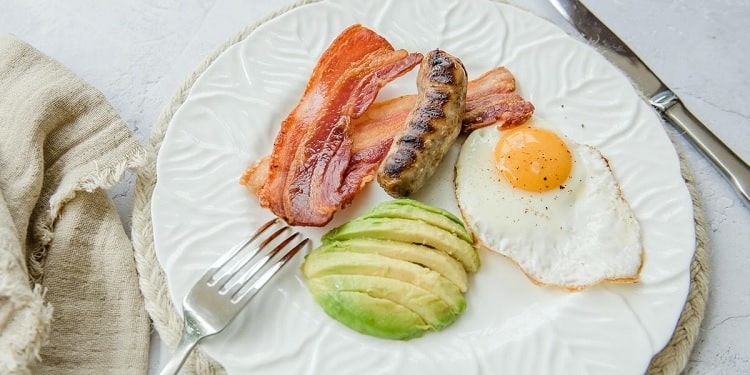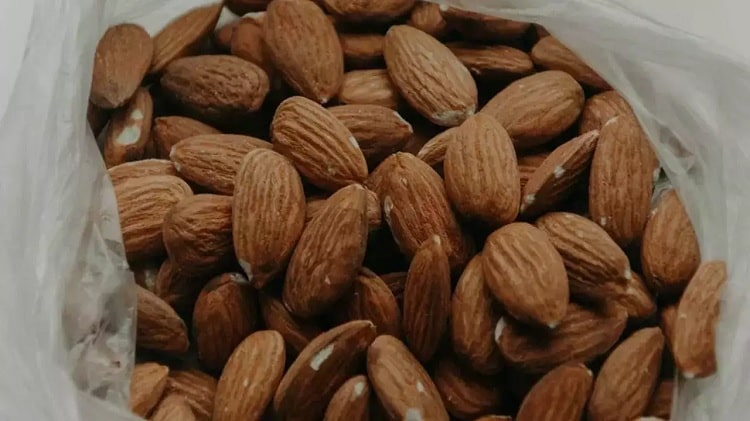Lazy Keto: A Beginner’s Guide (Benefits & Foods List)
When planning to lose weight, you need to adopt a suitable diet plan for desired results. The food we consume on a regular basis has a more significant impact on our weight. Recent trends highlight the effectiveness of the keto diet in weight loss. While following a keto diet, you focus on eating low-carb, high-fat, and moderate-protein foods. Following this keto diet helps you achieve a state of ketosis, which is a metabolic state where your body burns fat for energy rather than glucose.
The Keto diet is popular among people who wish to lose weight. A more relaxed form of the ketogenic diet is lazy keto. People are shifting their focus toward lazy keto since it is easy to follow and offers potential health benefits. Before embarking on any diet, it is best to thoroughly research it and devise a strategy for sticking to it. This article provides an overview of lazy keto for a better understanding.

What Is Lazy Keto?
Lazy Keto is a less strict version of the classic ketogenic diet. Unlike the keto diet, it does not emphasize tracking macronutrients. A traditional keto diet is a low-carb, high-fat, and moderate-protein diet that helps people lose weight.
It would help if you kept your macronutrient ratio at 55–60% fat, 10–15% carbs, and 30–35% protein while on the ketogenic diet. While a lazy keto diet restricts your carb consumption to around 5-10%, it does not require the intake of high-fat or moderate-protein foods.
Experts recommend that limiting your carb intake to around 50 grams per day during lazy keto helps you achieve ketosis. When you achieve ketosis, your body begins to burn break-down fat for fuel instead of glucose.
Ketosis switches your body to a fat-burning mode and helps you to lose weight. Lazy keto, a simpler variation of the traditional keto diet, requires you to limit your calorie intake to reduce body fat. When you follow lazy keto, you can reach nutritional ketosis without counting macronutrients like protein and fat.
Lazy Keto Versus Keto
Keto diets require you to keep track of your macronutrients. But Lazy keto only focuses on restricting carb consumption to 5-10%. You should keep your macronutrient ratio at 55–60% fat, 10–15% carbs, and 30–35% protein while on the ketogenic diet. This is different in the case of lazy keto, which does not recommend tracking protein, fat, or ketones. The Keto diet is a strict high-fat, low-carb, and moderate-protein diet, while lazy keto is an enjoyable version of a keto diet.
A Lazy Keto Diet: How to Follow It?
While starting lazy keto, your first focus should be on reducing calories. For that, you have to regulate your carb intake.
Start with Small Portions
Lazy keto is a simpler variant of a strict keto diet. You have to regulate your calorie intake in this partial keto diet. Reducing carb intake can be challenging during the initial days of any diet. Therefore, you can consider taking smaller portions of carbs to let your body adapt to the change before reducing it to 5-10% of your total calorie intake. Having a customized list of low-carb foods can help with your consistency. As a first step, you can set personalized carbs limits to manage your daily carb intake.
Track Your Net Carb Intake
When starting with any diet, you are likely to have less control over your appetite. In order to help with controlling what you eat, you can utilize fitness apps that help you keep track of your carbs. Have the habit of recording every food you eat in these apps to check your carb intake and gain control over your food consumption. Once you get a grasp of the nutritional benefits of foods, you’ll gain control over your net carb intake. You’ll be able to control your carb intake after that without having to maintain meticulous records.
Manage Your Food Consumption
Reducing carbs can cause a reduction in your appetite and cravings. Be mindful of how much you eat in a day to manage your weight. You need to control your food consumption to get desired results. Consider including whole foods in your diet to manage your hunger and regulate your food consumption.
Health Benefits of Lazy Keto
Following a lazy keto diet provides you with much more health benefits. The diet is a sustainable one that can help with weight loss and improve general health since it is simple to follow. We shall look into some of the major benefits of adopting a lazy keto diet.
Stimulates Fat Loss
When you are following a low-carb diet like lazy keto, your insulin levels reduce. This reduction in insulin levels encourages fat loss. In a 2013 study, it was discovered that people who followed a low-carb diet lost more weight than those who followed a low-fat diet.
Reduces Appetite
Following low-carb diets, such as lazy keto, helps to control blood sugar levels. This causes a reduction in your appetite and prevents overeating. Fluctuations in blood sugar levels stimulate hunger and promote excess calorie intake. Lazy keto helps stabilize your blood sugar levels and controls cravings.
Stabilize Blood Sugar Levels
When you consume carbohydrates on a regular basis, your blood sugar levels rise. Lazy keto helps to maintain control over blood sugar levels and sustain energy throughout the day.
Foods to Eat On Lazy Keto
A Lazy keto diet limits carb consumption without considering any intake of micronutrients. The food list of low-carb foods includes meat, poultry, fish, eggs, nuts, seeds, high-fat dairy products, veggies, and fruits. Eating whole-grain foods like bread, barley, oats, quinoa, and buckwheat can help you have a fuller feeling and support weight loss. Including veggies such as broccoli, parsnips, and corn in your diet can benefit your overall health. You can also consume fruits like blueberries, strawberries, and blackberries.
Foods to Avoid On Lazy Keto
In lazy keto, avoid consuming caloric-rich foods like starchy vegetables, legumes, sugary foods, and drinks. You can prevent eating grains, such as pasta and cereal. It is best to avoid starchy vegetables, including potatoes and sweet potatoes. You should avoid packaged foods since they can increase calorie levels in the body.
Lazy Keto Diet Plan
A sample lazy keto diet plan is given below:
- Breakfast: Bulletproof coffee + scrambled eggs with mushrooms and spinach + a few almonds.
- Lunch: A salad and a fish.
- Dinner: Chicken and broccoli.
You can also make food preferences to add variety to your lazy keto diet. Having a variety of food choices can help with consistency. You can also lose weight by following a lazy keto diet chart.
Who Should Avoid It?
Though lazy keto can provide you with much more health benefits, it is still a keto diet. Therefore, people with high levels of blood sugar, diabetes, hypoglycemia, and osteoporosis should avoid lazy keto. Since lazy keto is a restrictive diet, people with eating disorders should avoid it. Lazy keto is also not suitable for pregnant women, children, and lactating mothers.
Downsides
The major downside of lazy keto is that some people may find it hard to achieve ketosis since it does not require tracking all macronutrients. Though focusing on a low-carb diet can support weight loss, your body needs all essential nutrients for effective weight loss. The lazy keto diet can cause short-term symptoms like headache, nausea, and constipation in some people. It is always recommended to consult your medical practitioner before following any diet.
The Bottom Line
Following a lazy keto can have positive effects on weight loss. People who find it challenging to adhere to the standard keto diet may be intrigued by it because it is less restrictive. Lazy keto has potential weight loss benefits, like a reduction in appetite. Although a lazy ketogenic diet can aid in weight loss, it is best to control macronutrient intake in addition to it to assist in weight loss and general health.
Faqs
A less stringent ketogenic diet called lazy keto may help people consume fewer carbohydrates. When you eat fewer carbohydrates, your body is more likely to go into ketosis, a state in which it uses fat instead of glucose as fuel. As a result, lazy keto can assist you in losing weight.
The lazy keto diet streamlines the conventional ketogenic diet by concentrating on monitoring grams of net carbs. You need not keep track of calories, protein, and fat. The lazy keto diet’s objective is to keep your daily net carb intake to 20 to 50 grams.






